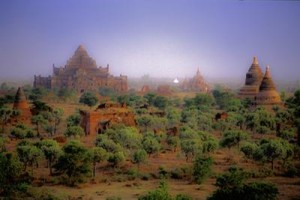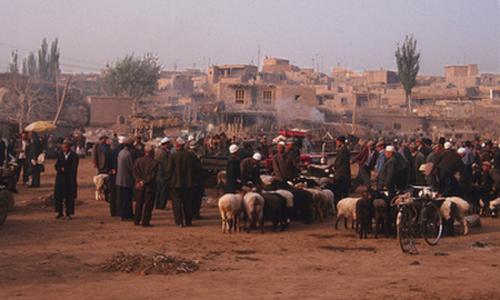Do We Need Maps in Fantasy Books?

Yesterday I spent part of the afternoon mapping the layout for a community event I’m planning. I found myself confounded (for a bit) about the need for scale, because I needed to be able to estimate the amount of security fencing I needed. What struck me was that I didn’t actually need to make a map. Others could have determined the fencing needs through simple math. But for me, the answer to my fencing needs lay in graphic representation so that I could measure the length of fencing from visualizing the exact boundaries of everything. It raised the question for me of whether maps of fantasy worlds were always necessary.
Controlling the reader’s experience of imaginary places seems to me to be the main purpose of maps in fantasy books – to set hard boundaries around the reader’s imagination. Whether a map is actually necessary has been a topic of discussion among writers. I wonder if the debate about the inclusion of maps couldn’t learn something of benefit from looking at dialogue within the cartographic world.

You see, there are some pundits who suggest that professional and academic cartography is dying because it has become too cut off from the human experience and too insistent on rules and scales and design constraints, while the human need to map (or simply to talk about location) is under constant evolution. Think about some of the things mapped today. It’s not mountains and rivers and landscapes. In my non-writing life I’m dealing with maps of childhood vulnerability, community asset maps and maps of fast food restaurants placed near high schools.
Not exactly like the maps of the great explorers, which is why I question whether qualities like scale are necessary, or even possible or useful, for many types of maps including those in fantasies. The maps I’m dealing with in my non-writing life are helpful to because they help me express certain phenomena occurring in the community, but I didn’t have to do it with a map. I could have provided a chart or a list, just as the fantasy author can provide description. Was a map even necessary? Is it necessary in a fantasy?
In the past, most of my books have been without maps, instead painting the picture of place with my words. In my epic fantasy, however, (The Warden of Power) I felt that a map was necessary as I wrote the first volume of my epic so that I could ensure place names, etc., were used consistently in the manuscript and its sequels. Did I include the map in the book? Actually, no.
I think the reading experience should be one that transports the reader to a place that they and the writer create together, without a map setting boundaries around the reader’s experience. Let the reader read my words, their brain cells fire, and reinterpret the world in my fiction. It doesn’t matter that they might not imagine the world exactly like me. My words are code and the reader will interpret them from within the context of what matters to them. Isn’t that what

reading is all about? Creating a world in your head? Some of the most disappointing experiences I’ve ever had involved artists (or Hollywood) providing their interpretation of a book I love. Inevitably their attempt to place boundaries around a character or the landscape wasn’t consistent with what I had in my head.
Mapping, like other forms of communication, reflects a need to express, to create and to understand, but setting a map in a book – like setting rigid rules around mapping — it can stymie the imagination. This applies whether we’re creating new maps to express new ideas or situations, or creating a world in a reader’s mind. Mapping, like dreaming, is a human need. Must we, as writers, place boundaries on that need?










4 Replies to “Do We Need Maps in Fantasy Books?”
A very thought provoking post, thank you. I am also insanely in love with maps so my comments come with bias also. They say a picture paints a thousand words, so that map saves the reader from trying to imagine where places are in relation to each other, how far apart. Was that a sea or an ocean? Oh, that forest is much larger than I imagined, etc. It allows we as writers to concentrate on the details and flavour of our world rather than distances, directions and boundaries.
In fantasy, maps are prevalent because most of us are nerdy about following along with the quest or journey. My eyes always light up when I see a map in a book. I think there is still plenty of scope for the readers to imagine our worlds in their own visuals.
Thanks for the feedback, Graeme. You and Colleen raise good points, but I still have concerns about the reader’s experience being controlled too much by a map as opposed to the reading experience. Still, I may have to rethink whether to include maps in my fantasies. Either that or I’m going to have goo much farther in giving orienting descriptions of distance and direction. Hmm.
I’m a person who loves maps, and that, of course, skews my thoughts here.
I seldom if ever go to movies made from my favorite books, and I’ve often disliked the covers of books – especially when they have a picture of the main character. The movie and/or the cover conflict with “my view” of the story.
On the other hand, maps often clarify something for me, whereas covers and movies never do. While an author may eventually draw me a complete picture of an area, that picture is spread throughout the book. I know that authors are invested in the 1000 words replacing that picture, but sometimes that picture is indeed worth having. They’re easy to page past if the reader prefers, but having one is an asset for those of us who want and or need them.
So my vote is – include the map! And thank you when you do!!!
Thanks for the input, Colleen, I guess I’d better find a way to get my maps in decent form then!